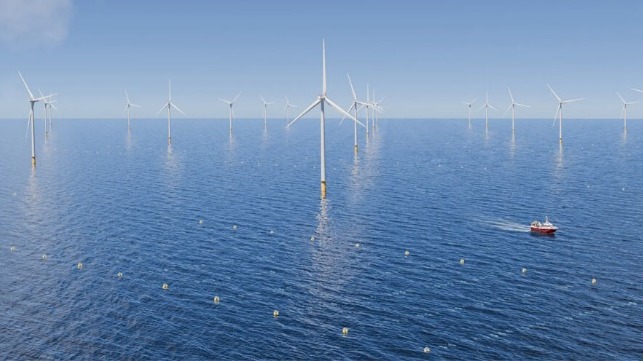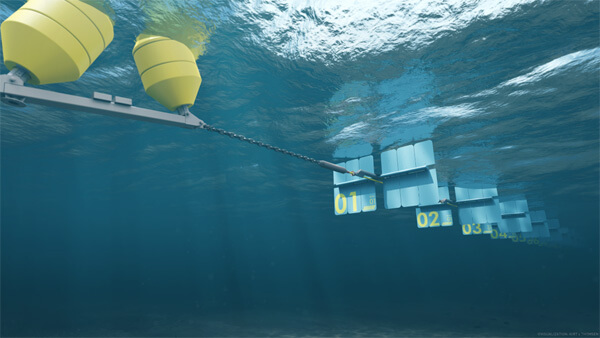Ørsted to Explore Integrating Wave Energy into Offshore Wind Farms

Wavepiston, a Danish company seeking to develop wave energy solutions, has started a collaboration with Ørsted to investigate the potential for the co-location of offshore wind and wave energy in Denmark. It is the latest in a series of different applications being explored by wind farm developers and encouraged by governments to better utilize the ocean space being devoted to wind farms and provide consistent energy supplies.
The collaboration with the leader offshore wind developer will analyze the benefits of combining offshore wind and wave energy. According to Wavepiston, it will show the potential of optimizing the energy yield from the natural resources available in Danish waters.
The company which received its first patent in 2009 for its unique technology has moved in recent years into full-scale demonstrations and tests. This year, with the support of the European Union and leading researchers, they launched a four-year project to develop key components of a seawater hydraulic power-take-off (PTO) system, coupled with an advanced control strategy.

Wavepiston's technology uses "sails" that move back in force in the waves (Wavepiston)
The technology employs energy collectors that move back and forth in the passing waves. The movement drives hydraulic pumps generating pressurized seawater, which is piped to the conversion station (onshore or offshore) where the pressurized seawater is used to generate electricity via a standard hydropower turbine and/or desalinated water through a standard reverse osmosis system. A wave energy farm would consist of multiple strings all pumping pressurized seawater to the common conversion station, scalable both to wave resources and to energy and/or water demands at the given location.
Wavepiston assets that co-location of offshore wind and wave energy present a multitude of benefits, starting with increased energy production from the same area. The combination of wind- and wave energy they write can provide a more stable and reliable supply of electricity, reducing intermittency issues and by sharing infrastructure such as transmission lines, offshore operations, and surveillance can significantly reduce operational costs.
“We are excited about the opportunities this collaboration presents and the positive impact it can have on the environment and energy market of the future,” said Emiel Schut, CCO of Wavepiston.

that matters most
Get the latest maritime news delivered to your inbox daily.
Wavepiston is telling investors that it is ready to scale. They reported having ongoing dialogues toward 17 sold projects by 2030, leading the way to €1-2 billion in revenue and 3.5-5.4 GW of capacity by 2035.
Looking to increase the yield from the ocean area, the Dutch called for projects awarded in 2022 to pursue the co-location strategy. RWE is exploring options incorporating floating solar energy panels. Other concepts call for adding batteries to store excess power and to provide greater regularity from wind farms as well as co-locating using the energy from the wind farm for offshore production of hydrogen. Among the tests being developed is a project in Spain that combines wave energy and hydrogen production into a wind farm. Tests at offshore hydrogen production are also underway.
